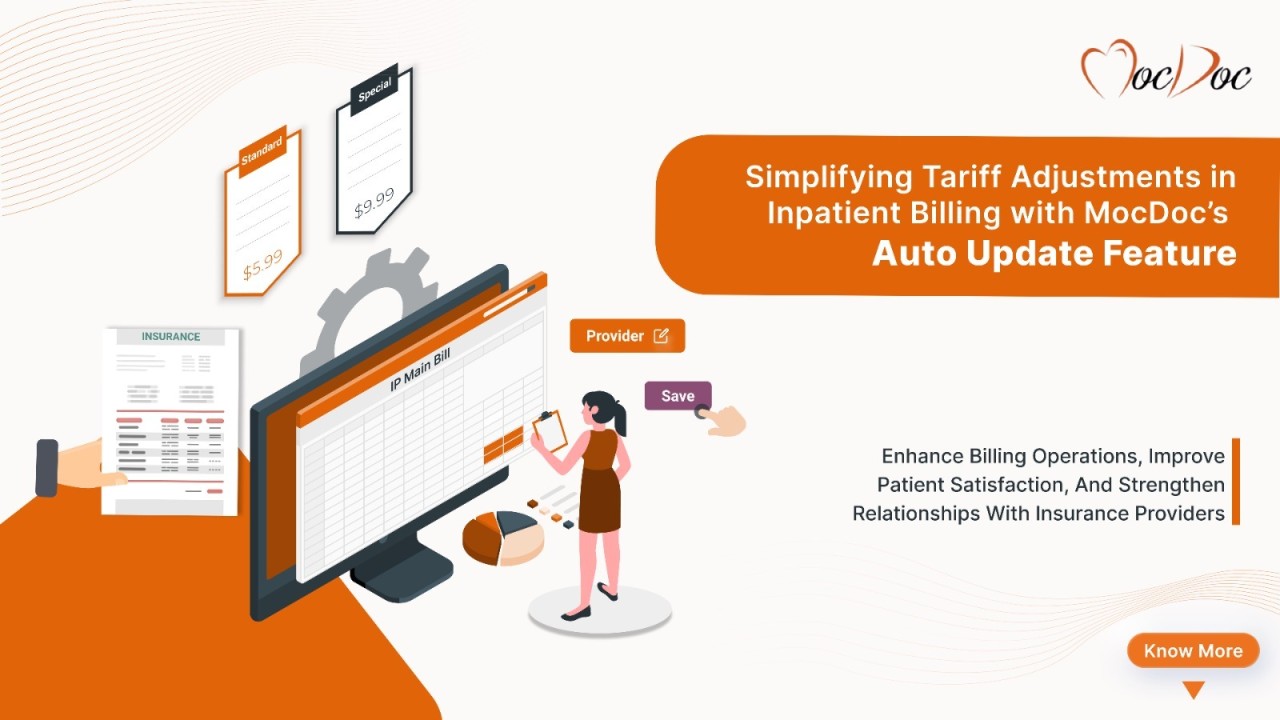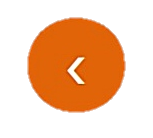2024122613:22:12
Simplifying Tariff Adjustments in Inpatient Billing with MocDoc
Published by: Mohammed Siddiq

Hospitals frequently face operational challenges when managing inpatient billing, especially when a patient admitted under a cash payment plan decides to switch to an insurance scheme midway through their treatment. This seemingly simple request can lead to a complex, time-intensive process of tariff adjustments for the services already rendered. To address this pain point, MocDoc has introduced the Auto Update Tariff Feature in its hospital management system.
This article explores the challenges hospitals face in such scenarios and how this innovative feature simplifies billing operations, ensuring accuracy and efficiency.
The Challenge:
Tariff Discrepancies in Inpatient Billing Hospitals typically maintain two distinct tariffs:
- Cash Patients: A standard rate plan applicable to patients paying directly.
- Insurance Patients: A specialized rate plan, often higher, negotiated with insurance providers.
When a patient switches to an insurance scheme after admission, the hospital’s billing team must manually update the prices of all services already added to the inpatient (IP) main bill. This process is:
- Time-Consuming: Adjusting each service line manually takes significant effort.
- Error-Prone: Manual updates can lead to discrepancies in billing.
- Operationally Strenuous: The administrative workload increases, diverting attention from patient care.
The Solution: MocDoc’s Auto Update Tariff Feature MocDoc’s Auto Update Tariff Feature is designed to eliminate these challenges by automating the process.
How It Works:
- When an insurance provider is mapped to a patient already admitted, the system instantly identifies the change in payment scheme.
- The prices of all services previously added to the IP main bill are automatically updated based on the rate plan associated with the newly mapped insurance provider.
- All subsequent services are billed as per the insurance tariff, ensuring consistency and transparency.
Key Benefits of the Auto Update Tariff Feature
- Time Efficiency: Automates the update process, saving significant administrative time.
- Accuracy: Ensures that all services reflect the correct pricing based on the insurance rate plan.
- Operational Ease: Reduces the burden on hospital staff, allowing them to focus on core responsibilities.
- Transparency: Builds trust with patients and insurance providers by ensuring billing clarity.
- Compliance: Maintains adherence to insurance agreements and hospital policies.
Real-World Impact Consider this scenario: A patient admitted under cash payment opts to utilize their insurance after two days. The hospital team, using MocDoc’s system, maps the insurance provider to the patient. Within seconds, all service charges in the IP main bill are updated automatically, without manual intervention. This seamless process ensures that the hospital’s billing aligns with the insurance provider’s tariff, eliminating potential disputes or inaccuracies.
Conclusion
Tariff adjustments during inpatient treatment have long been a challenge for hospitals, often leading to operational inefficiencies and billing errors. MocDoc’s Auto Update Tariff Feature provides a robust solution by automating price updates, ensuring that hospitals can handle such scenarios effortlessly.
By leveraging this innovative feature, healthcare facilities can enhance their billing operations, improve patient satisfaction, and strengthen relationships with insurance providers.
Why 100 Bed Hospitals Nee...
Why Every 100+ Bed Hospital Needs a Fully-Structured Hospital.....
Published by: Mohammed Siddiq
2025120518:50:19
NHRA-Compliant Hospital M...
NHRA-Compliant Hospital Management Software in Hamad Town, Ba.....
Published by: Mohammed Siddiq
2025110819:01:08
VMS Integrated Hospital M...
Benefits of Using VMS Integrated Hospital Management Software.....
Published by: Mohammed Siddiq
2025121320:04:39
Why you should never down...
When searching for software, almost everyone looks for free o.....
Published by: Steve
2025101609:09:20






